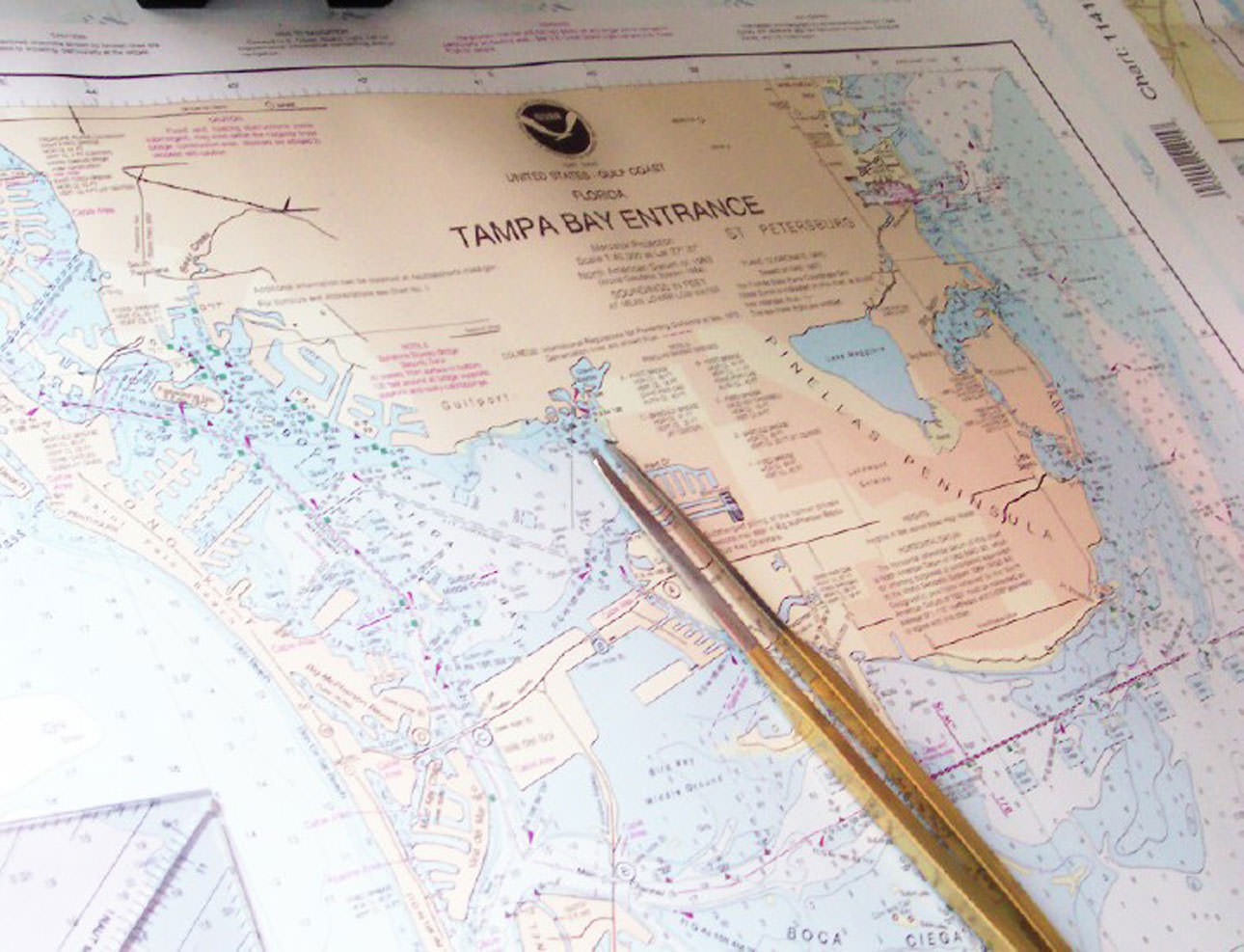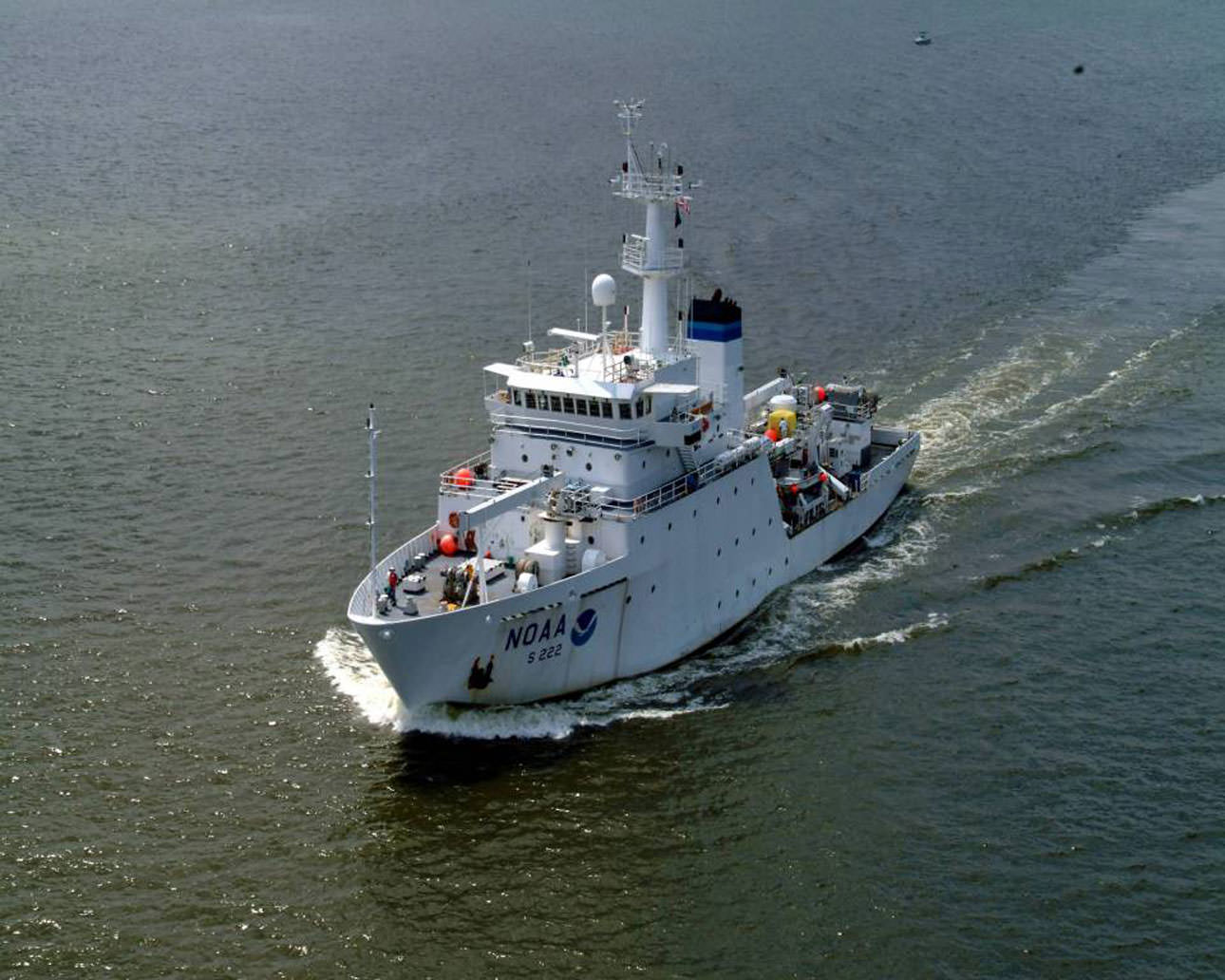 | ||
| A NOAA PAPER CHART, IMAGE COURTESY NOAA
Navigational forensic experts of the American Admiralty Bureau, Ltd have frequently described for American courts the standard of navigational accuracy for non electronic navigation. In terms of fixing position when navigating with magnetic compass, paper charts, parallel rules and dividers it is generally plus or minus 200 yards of true position. "True position" today may be determined within 50 feet or less using GPS. Unfortunately the value of knowing your "True Position" ( exact latitude and longitude on the face of the earth ) isn't of the same value at all times and in all places. Crossing a deep portion of ocean with no surface features and depths far beyond the deepest ship's draft there is little to worry about whether you are 200 yards off or less than 50 feet off. But in confined or obstructed waters, or waters transitioning from deep to shallow the tendency to crank up and rely on the GPS linked electronic chart display even when it is working to its most efficient performance can prove deadly. Despite the fact that mariners can now print out their own paper charts or dial up electronic charts "updated" to the day you print them out, there are hidden dangers. The new "updating" may alert you to the location or approximate location of new known obstructions but that is not enough to warrant the seemingly blind trust than many younger professional mariners put in electronic navigation. The GPS may show you on the chart your precise position in terms of longitude and latitude but you might be 200 yards nearer or farther off from that rock, shoal, shallow area, or beach line than your "updated chart " indicates.
The "datum" on your navigation chart, unlike your own GPS generated position may be decades or even centuries old, and formulated using pre-electronic navigational systems. NOAA and the British Admiralty are working on improving basic chart datum like depths, bottom types, positions of land forms, rocks, etc.. But this is still slow time consuming work. The painstaking nature of updating basic chart datum is the one of the main reasons why NOAA maintains its Atlantic and Pacific Fleets of research ships, boats, and air craft. Satellites help but most often there has to be a survey ship visit to the sites incorporated onto navigation charts. Time, skills, professional effort, and serious expense are involved, the work is never finished, and tends to move slowly. The prudent mariner never fully relies on assumptions , if you can't verify the accuracy of your chart's under lying data, don't assume that your estimated proximity to navigational hazards is vastly improved by your electronically produced fix of position. You must always consider datum reliability in factoring safety margins. The older your chart datum, the less reliable it is, and the greater margin for error for safe passage you should allow.
Fortunately today , at least the new NOAA charts help you to estimate the reliability of datum. NOAA now marks its chart products with notations /diagrams on "ZONES OF CONFIDENCE" (ZOC) . The ZOC diagrams and notations address information on such datum as age of information , position accuracy, and seafloor coverage.
|
Sunday, December 18, 2016
THE UNDERLYING INACCURACY IN TODAY'S NAVIGATION
Subscribe to:
Post Comments (Atom)

No comments:
Post a Comment